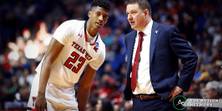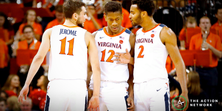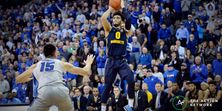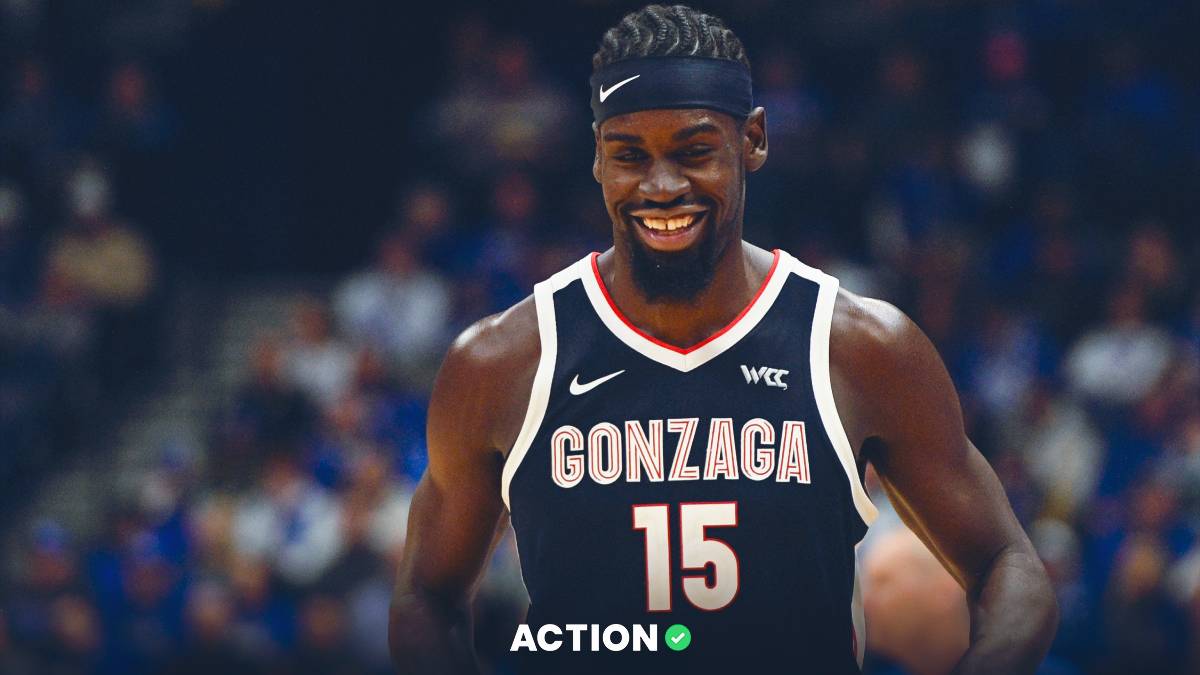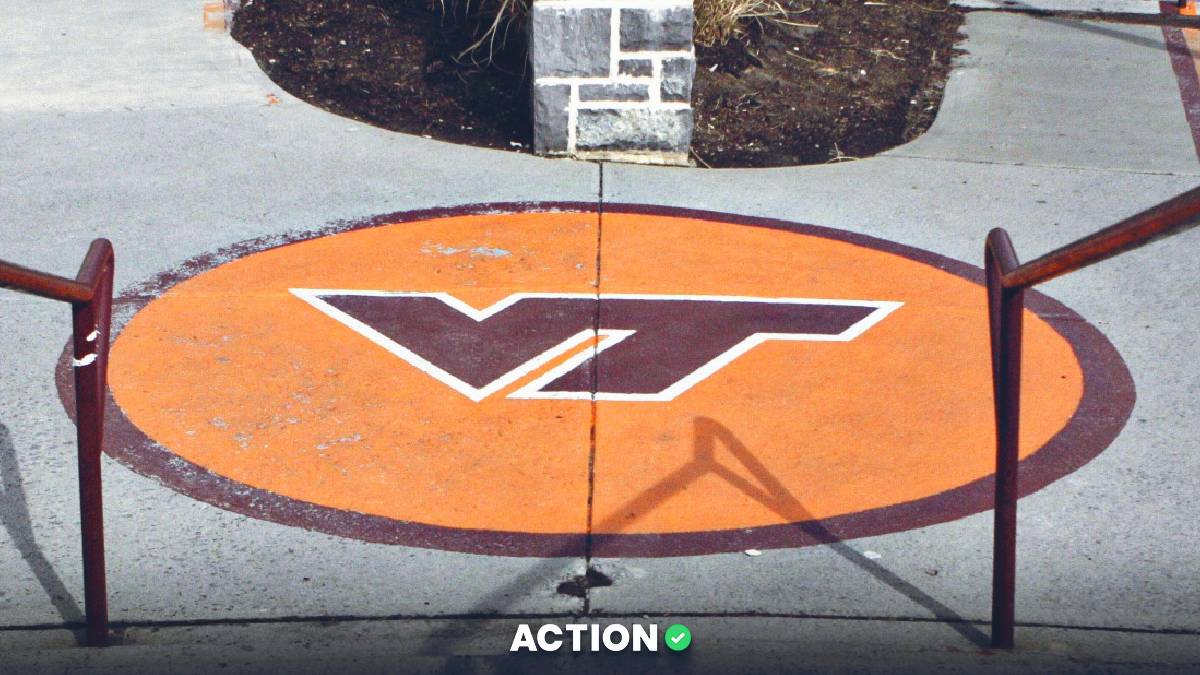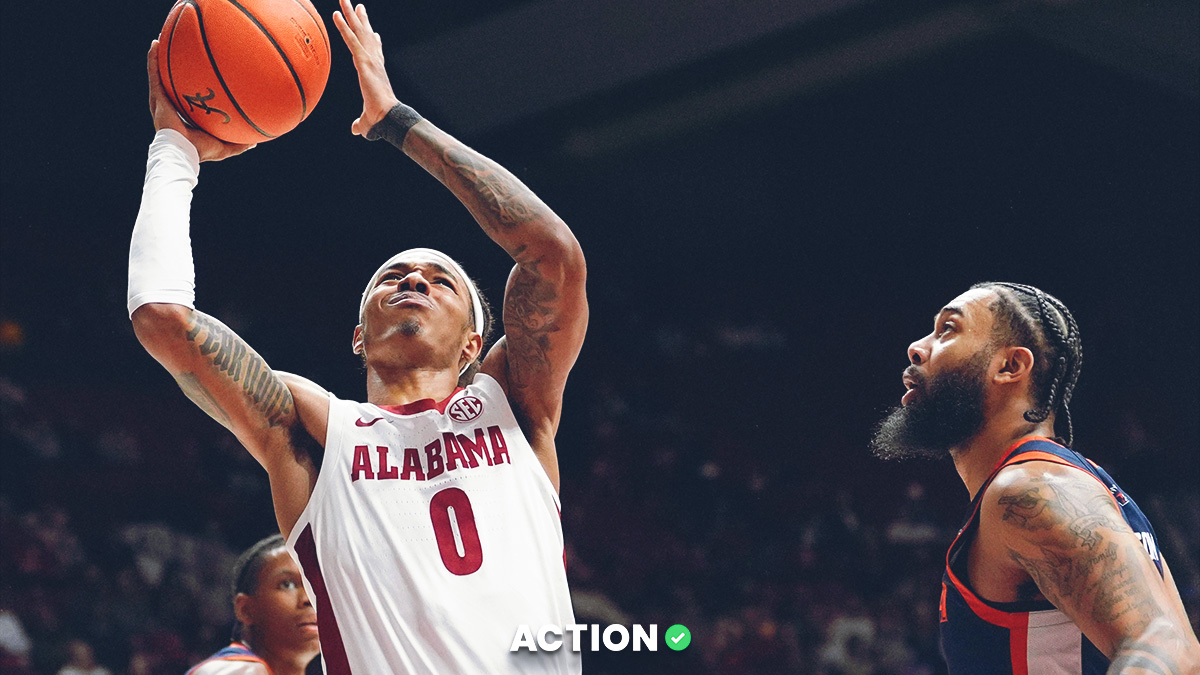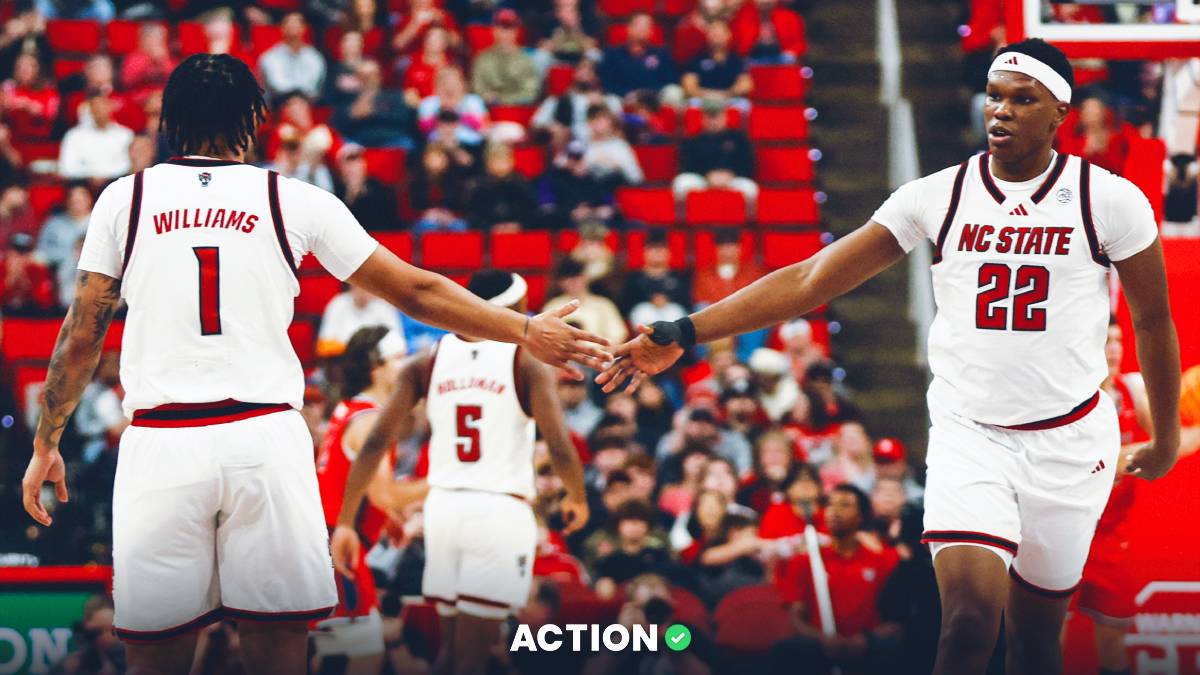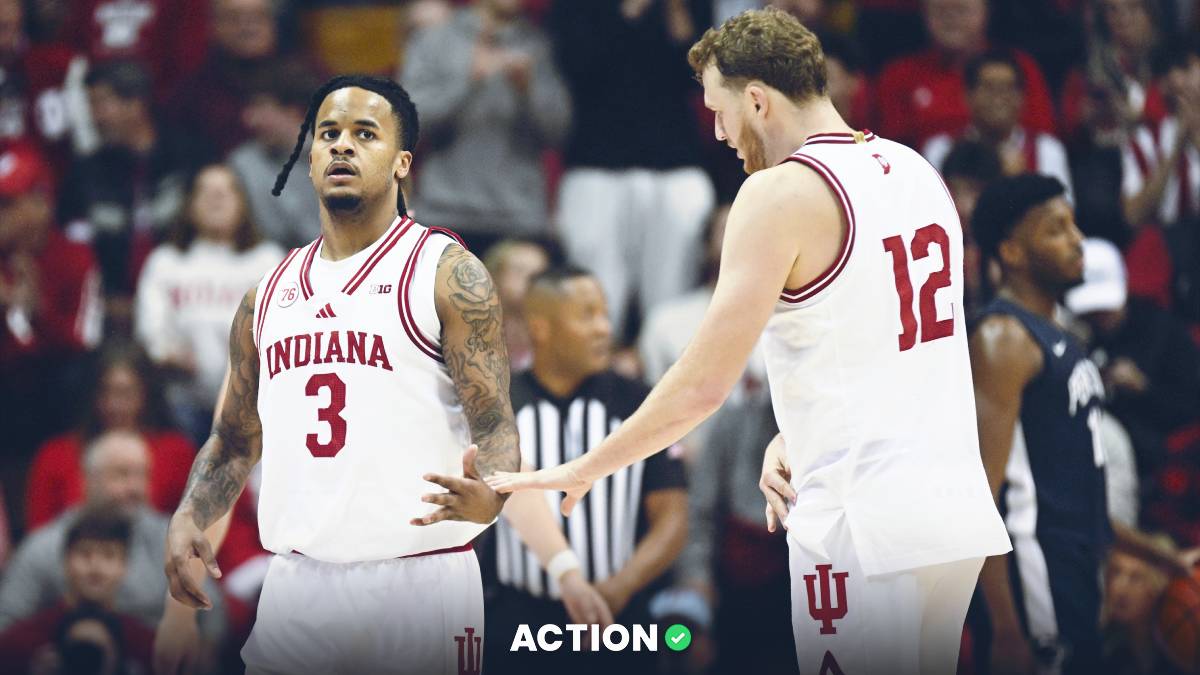- College basketball teams shoot worse in football stadiums due to altered sight-lines, but that hasn't led to value on the under in recent years.
- In fact, the betting market has perhaps over-adjusted to that trend and not accounted for the overall rise in 3-point rate and tempo in the Final Four.
- Ryan Collinsworth examines the data and explains how things have changed recently.
The NCAA Tournament's Final Four has been held in football stadiums every year since the 1999-2000 season. That's not the standard college hoops venue, obviously.
These massive coliseums dwarf most college arenas in seating capacity, and they also have different dimensions than a normal basketball arena.
As a result, there exists this belief that teams shoot poorly when playing in football stadiums due to altered sight-lines and depth perception.
So, I did some data-mining to evaluate whether or not this theory is true — and what effect it has on betting over/unders in the Final Four.
Testing the Theory: Do Teams Actually Shoot Poorly in Football Arenas?
In short, yes.
I compiled a master list of every NCAA Tournament game played in football stadiums since the 2004-05 season (of which there have been 111) and logged pertinent team statistics and game outcomes for each of them. Then, I compared each team's performance in football stadiums to the rest of their games in traditional basketball venues in the given season:
As you can see in the table above, teams do shoot worse in football stadiums compared to their season averages in just about every way.
It's also worth noting that Final Four games produce similar splits to NCAA Tournament games played in football stadiums. This reinforces that the observed decline in shooting efficiency is likely due to the game's venue rather than the heightened level of competition in Final Four play.
Historical Over/Under Trends
Our preliminary data seems to support the prevailing theory that teams indeed shoot poorly when playing in football stadiums. So, we should expect the under to be hitting at a high clip in such games, right?
Well… it used to.
From 2005 to 2014, the under went 13-7 in Final Four games relative to the game's closing total, per our data at Bet Labs. But, from 2015 to 2018, the over has made a huge comeback, going 7-1.
Overall, that gives the under a 14-14 record since 2005, which doesn't seem to reflect the poor shooting splits reported in the previous section, albeit it's in a small sample.
Furthermore, the over's 7-1 record since 2015 seems peculiar. For the over to reverse course so strongly over the last four seasons, something major must have changed in the betting marketplace.
The way I see it, there are two potential ways the betting market may have changed in recent years:
- It's possible that oddsmakers and the market have adjusted to teams' poor historical shooting in football stadiums by lowering opening totals and deflating value on the under.
- However, it's also possible that books haven't adjusted enough to on-court factors like rising 3-point rates and faster tempos that are driving higher game totals irrespective of venue. The market may be too anchored to the "football stadium" trend and are missing a stronger secondary trend driving game totals up.
Let's examine each of these scenarios to see what might be going on.
Possible Explanation: Oddsmakers are Sand-Bagging Opening Totals
In this scenario, books and the market will have over-adjusted to the "football stadium" trend, lowering opening totals too far in recent years in response to poor historical shooting in Final Four games.
However, when we examine average closing totals — and actual game totals — over the past 14 seasons, there's little evidence supporting this claim. Final Four totals are up.
Average closing totals have not trended downward over the last four seasons. In fact, they've trended upward compared to 2010-2014. On top of that, teams' overall scoring is also increasing over the same span. But actual scoring is going up faster than books' totals are.
You can clearly see in the graph above — for whatever reason, maybe since Butler was there — a massive drop-off in average points scored in Final Four matchups between 2009 and 2010. But since that point, scoring has steadily made a full recovery.
During the 2015 Final Four, average points scored per Final Four matchup finally overtook Vegas closing totals, and it has held a significant margin over closing totals in each subsequent season.
This data does not support a systematic deflation in average closing totals during the past four seasons. Accordingly, this means that books likely are not sand-bagging totals to bait the public into an undervalued under bet, or that the market is over-adjusting.
Moreover, the above line graph also reveals that scoring averages have been climbing over the same span that the over has gone 7-1. That should tip us off that something else is likely going on.
So, our new question is: What is causing this increase in Final Four scoring over the last few years?
Alternate Explanation: College Offenses Have Changed
What if books are actually behind the 8-ball on an unrelated college basketball trend driving the over in recent years?. That is, a trend that is more recent and more powerful than the "football stadium" effect.
My theory is that the proliferation of modern 3-point shooting is responsible for increased Final Four scoring in recent years and that oddsmakers have not properly adjusted to that trend.
In a previous article from this season, I examined college basketball's 3-point revolution. In that study, I found that average 3-pointers attempted, 3-pointers made, effective field goal percentage and game totals have all increased substantially across all of college basketball since 2015.
Below, I've reproduced a few key graphs from that article that report statistical averages for all college basketball teams since 2006.
The observed upward trends in 3PM, 3PA and eFG% perfectly mirror the upward trend in Final Four scoring over the same span.
In fact, when you examine Final Four matchup data from 2005-2014 versus 2015-2018, the statistical splits for each date range are drastic:
How to Approach Final Four Game Totals in 2019
This analysis had a few twists and turns to it, so let's briefly review the key takeaways so far:
- Common sentiment is correct that teams shoot poorly in football stadiums compared to standard basketball arenas. This trend remains true even over the last four years when we've seen a reversal in over-under results.
- Despite this confirmed "football stadium" effect, Final Four scoring has still increased markedly since 2015, in part due to a holistic increase in college basketball's 3-point shooting rate and overall pace.
- Final Four closing totals have also increased in recent years to try to keep up with the increase in scoring, but they have still undervalued the recent scoring trend — and perhaps still overvalue the "football stadium" effect. This has resulted in a 7-1 record for the over since 2015.
We now arrive at 2019's Final Four matchups, both of which feature remarkably low game totals compared to recent seasons. As of writing, Auburn-Virginia's total is 131 and Texas Tech-Michigan State sits at 132.5. The combined average total for both games is 131.8. Contrast that with average closing totals from the last six seasons:
This year's Final Four matchups have the lowest average game total since 2013, which flies in the face of all the trends we've examined in this article.
Perhaps this season is exceptional due to the defensive and tempo profiles of this year's Final Four teams. However, given the recent 7-1 over trend, the upward trajectory in season-long and Final Four scoring in recent years, and the remarkably low totals offered in this season's Final Four matchups, there's a strong argument for taking the over in both contests.




